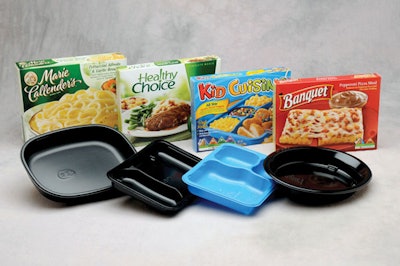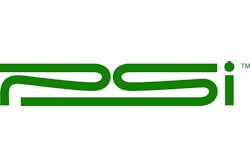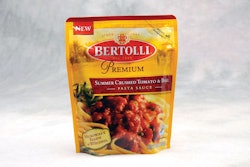Sustainable packaging was a hot enough issue before President Obama was sworn in. His administration’s focus on “green” will only turn up the heat. So now is as good a time as any to take stock. How well do we understand sustainable packaging, and to what extent have we allowed misunderstandings, myths, and misgivings to cloud the issue?
Lots of companies want to do the right thing. They just aren’t sure what the right thing is. This is due to a misunderstanding of the issues, including the very definition of sustainable packaging. The Sustainable Packaging Coalition has one definition. Alternatively, some companies follow the Triple Bottom Line. The Wal-Mart scorecard has also served as a definition for some companies.
These are often complex or incomplete definitions that can be difficult to understand. They’re so technical, it’s almost impossible for any package to be completely compliant.
Maybe it’s more important to understand what a sustainable package does instead of defining what it is. Viewed from this perspective, we can safely say that a sustainable package is one that correctly protects the product with the features consumers require (social) with the smallest possible impact on the environment (environmental) that you can afford to sell and profit on (financial). This is a simplification of the Triple Bottom Line concept incorporating all three pillars of sustainability: social, environmental, and financial. We might also call this the No Trade-Offs concept: To be sustainable, a package cannot have a large negative impact on any one of the three pillars.
I subscribe to the No Trade-Offs concept. But embedded in it is a fundamental misunderstanding: That a sustainable package has to be the most environmentally friendly package. Sustainable packaging is not the same as green packaging. Green packaging represents the environmental pillar of sustainable packaging, but a proper view of sustainable packaging isn’t possible unless the social and financial pillars are also considered equally. A package that is incredibly friendly to the environment but costs too much to sell and/or does not meet performance requirements is not a sustainable package. If companies address sustainability from a No Trade-Offs perspective rather than just focusing on the environmental aspect, they will quickly find lots of opportunities that make sense from all three standpoints. This seems like a basic concept, but if you think about it, how many times have you heard “Going green has to cost more” or “I can’t afford to be sustainable?” If a company only focuses on one of the three pillars, they’ll quickly find the other two become roadblocks rather than benefits.
The second misunderstanding that handcuffs companies from acting is not understanding what is most important from an environmental aspect. There are lots of environmental factors to consider: energy use, greenhouse gas production, human toxicity, end of life, the type of resource the package is made from, etc. How does a company determine what is the most important factor to pursue? The answer again lies in the No Trade-Offs principal. If you have an existing package you are trying to improve and you can improve some of the environmental factors without negatively impacting the others, that decision is easy, you do it. But what do you do if there are conflicting priorities? What if the change can reduce energy usage and greenhouse gas production but increases human toxicity and water use? The answer is unfortunately less simple. The company needs to decide what is most important to it and drive those initiatives forward while doing what it can to minimize those other impacts. In the example above, can the company reduce the human toxicity impact by providing the line workers with respirators? Can it reduce water use by recycling cleaned waste water or collecting steam condensate?
The third misunderstanding arises when a company asks itself this question: Do we apply sustainable thought processes to new packages or to existing packages? The simple answer is that it should be applied to both. Sustainable packaging means you are improving either the environmental, financial, or social impact of your package, so why not incorporate this concept wherever possible to drive the largest positive impact to your package and your company?
Myths debunked
Outside of misunderstandings, there are many myths surrounding sustainable packaging. A myth is something that is said but is not necessarily based upon fact. These are the urban legends of sustainability, and there are plenty of them. We’ll try to address the most common.
The single most common myth surrounding sustainable packaging is “sustainable packaging has to cost more.” This myth is very untrue on several levels. If you subscribe to the No Trade-Offs concept, then a sustainable package cannot cost more unless you can sell it for more. Also, most cost-saving programs that are based on material reduction, pallet efficiency improvements, or line efficiency improvements all have a positive environmental story as well. If you are using less plastic in your bottle, not only are you reducing costs but you are reducing the environmental burden. Being sustainable actually requires that you be financially responsible. It does no good to have an environmentally friendly package that you cannot sell. That is not a sustainable package! Some programs will require capital up front like redesigns that require new tooling or returnable packaging investments, but these should meet company guidelines for return on investment and make good financial sense. It’s no different than an investment in tooling to reduce bottle costs, capital to improve automation, or investment in an innovative new product.
A second common myth is around additives that can make any plastic degradable. There are claims that they work in almost any plastic under any degradation conditions (marine, aerobic, anaerobic, compost, landfill, etc). This is an area that would require enough exploration for an entire article on its own, but in order to address the myth here, remember one very basic caution: If it sounds too good to be true, it often is. Make sure you see all the data and understand the technology before any decisions are made. Also make sure you understand your state’s laws regarding claims on degradability. The state of California, for example, passed a law that does not allow for degradability claims if they don’t meet ASTM D6400 or other specific standards.
A third common myth surrounds biopolymers and the food versus fuel discussion. It’s important to remember that the basis for food versus fuel was ethanol production, not biopolymers. Biopolymers got added to the discussion later on, and by now they’ve become a sticking point. But the potential demand for ethanol as a fuel, and the corn it would require, far outweighs the impact biopolymers could ever have. If you use conservative numbers, less than 5% of all petroleum is used to create plastic, and only a portion of this ever becomes packaging. A vast majority of petroleum is used as a fuel to create energy or is converted into gasoline for transportation. Food versus fuel is an important concept to consider, but make sure it is considered in its intended context, as a discussion point for ethanol production, not biopolymer production (hence food versus FUEL not food versus PACKAGE). According to Natureworks LLC, if all the biopolymer plants that use corn as a feedstock were operating at full capacity (several hundred million pounds of resin), less than 0.5% of the world’s corn would be required. According to the National Corn Growers Association, ethanol production has little to no impact on corn pricing. The major driving factor in increased corn pricing is increased energy costs (including petroleum costs), and ethanol production utilizes far more corn than biopolymer production. To see a summary of this study please visit http://ncga.com/files/pdf/FoodVersusFuelDebateOver4-09.pdf.
A fourth common batch of myths revolves around recycling. Consider these three:
• PETG labels are better than other shrink labels because they can be mixed with the APET recycle stream. PETG shrink labels are not easily compatible with the traditional APET recycling stream. The glycol in PETG is a contaminant to the APET recycling stream. Contaminants can impact the performance of automated sorting systems as well as the quality of the final resin. The lower the quality of the final resin, the less uses it is appropriate for and the less profitable it is for the recyclers. PLA, PVC, BOPP, and PETG shrink bands and labels all should ideally be removed from any bottles before entering the recycling stream since they are all contaminants. In addition, most recycling centers are not set up to handle flexible materials of any kind.
• Everything that has an SPI code of “1” gets recycled. This is a very common myth. The only containers that are widely recycled currently with the “1” code are mono-layer bottles (pop bottles, water bottles, etc). Multi-layer bottles are accepted but not preferred and if possible are sorted out since the non-PET layers are contaminant streams. Packages like traditional ketchup bottles that have an EVOH barrier layer are typically sorted out before recycling (ConAgra Foods’ Hunt’s Ketchup bottles are the exception, they utilize a mono-layer PET bottle with an active oxygen scavenger and these bottles are much more acceptable in the recycling stream than the multi-layer option). In addition, most packages that are colored black do not get recycled. The black color presents difficulty in automated sorting (infrared light absorption) and end product quality (black can only become black). One of the large “1” coded products that do not get recycled is black CPET trays for frozen meals. This is partially due to the color issue, but also due to basic chemical differences between CPET and APET (heat deflection temperatures, intrinsic viscosities, etc.) that would cause the final resin to be less desirable.
• A wider variety of plastics do not get recycled because the technology does not exist. This is partially true and partially false. The most commonly recycled resins are PET, HDPE, and LDPE. This is because there is a demand for the end products from the recycling process. This demand has led the industry to build an infrastructure to easily and cheaply produce those recycled resins.
The basic technology of how to recycle other resins (PP, PLA, etc) also exists, but the infrastructure to recycle these other resins does not exist on a widespread scale. There has been a lot of work that has gone into this area. Primo water has worked with Natureworks LLC on additives to their PLA bottles that make them glow under black light, making them easy to visually sort. Unisensor has developed an ultra high-speed laser spectroscopy technology that can identify resin types on a mixed stream of flake product that can achieve up to 98% purity. The recycling industry and the packaging industry need to work hand in hand on this issue and develop end uses for recycled resins of other types and figure out the best way to cost justify the capital required to recycle these resins.
Finally, the misgivings
Even after understanding all of the misunderstandings and myths around sustainable packaging, some companies will find it hard to drive forward. This is due to some basic misgivings about sustainability and sustainable packaging. All the misgivings roughly fall into the overall heading of “sustainability is a fad that will run its course and go away.” This is entirely false. Sustainability is rapidly becoming a cost of entry to do business. With WalMart using an environmental score on which to base purchasing decision, numerous studies showing consumers prefer to buy sustainable products, and more and more retailers beginning to ask questions around the environmental impacts of a product and its package, this is no longer an issue that will just go away. We are in the early phase of this movement, and those who act aggressively and move quickly will get the benefits of being early adopters. The rest will eventually have to follow and reap much smaller benefits. Whatever the reasons a company has for not believing sustainability is here and here to stay—consumers not caring, customers not caring, my products aren’t impacted—they’re wrong. Sustainability in general and sustainable packaging specifically is here to stay.
Overall, sustainable packaging is an exciting idea. It also happens to be complicated and, occasionally, confusing. That’s why it’s important for a company to have someone that understands all the intricacies and complexities of this field. New technologies are constantly being developed that may or may not have application. New claims are being touted that may or may not be backed by science. The government is getting involved looking at laws to ban plastic bags, BPA, PFOAs, phthalates, and other materials and additives.
Given all of this, it is a great time for companies to forge ahead and to get ahead of their competition. Some already have. ConAgra Foods launched two new products this past year with their partners that have huge sustainability advantages. One is recycled PET in CPET trays made by Associated Packaging Technologies. Another is post-industrial recycled PLA for shrink films; partners included Natureworks LLC, Plastic Suppliers, and BluePack.
Frito-Lay is another good example of a company that has made huge progress in introducing sustainability into the DNA of one of its brands, Sun Chips. They have moved to using solar energy to heat the oil to cook the chips and introduced a renewable resource, PLA, as 33% of the bag.
What about Pepsi, where Pepsi Propel water bottles have been redesigned to use 33% less plastic and 30% less label. Or Aveda, where they’re using 96% post consumer recycled material in some of their shampoo and other bottles and recently became cradle-to-cradle certified on other items. And don’t forget Coca-Cola, which has introduced its PlantBottle, a bottle that contains renewable content but remains recyclable.
These companies are setting themselves up to be leaders in this industry. There is no reason other companies cannot join them in leading the charge and make a change that matters. All it takes is dedication, hard work, a creative mind, and a strong understanding of the issues, the potential solutions, and how they can help your package.
























